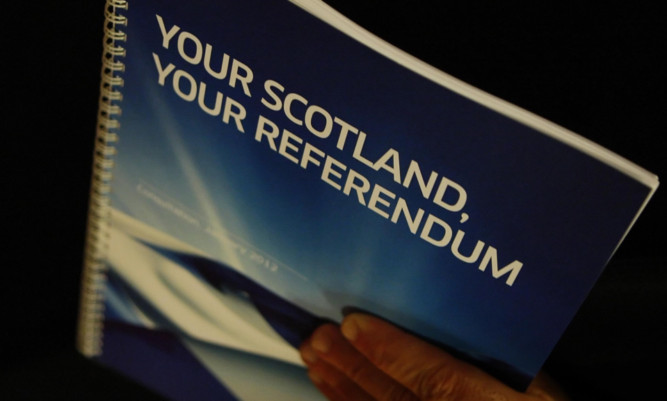The elections watchdog has rejected the Scottish Government’s preferred question for next year’s independence referendum.
First Minister Alex Salmond’s proposal for the historic vote is to ask voters: Do you agree that Scotland should be an independent country?
But the Electoral Commission said using the phrase “do you agree” could encourage some people to vote yes. It said the question should have a more neutral wording, and recommended it be changed to: Should Scotland be an independent country?
John McCormick, Electoral Commissioner for Scotland, said: “We have rigorously tested the proposed question, speaking to a wide range of people across Scotland.
“Any referendum question must be, and be seen to be, neutral. People told us that they felt the words ‘Do you agree’ could lead voters towards voting yes.”
Voters have a “clear understanding that ‘independent country’ meant being separate from the UK”, Mr McCormick said.
But he also said voters want more factual information before the referendum so the commission has called on the UK and Scottish governments to clarify the processes that will follow the ballot, regardless of the outcome.
“We’re asking the UK and Scottish Government to provide that clarity and we’ll then make sure it gets to voters as part of our public awareness campaign,” Mr McCormick said.
Scottish Deputy First Minister Nicola Sturgeon suggested that the Scottish Government could accept the commission’s findings. She told MSPs on Tuesday that ministers would attach “considerable weight” to these.
“There would have to be a very good reason to depart from Electoral Commission recommendations, and any government so doing would have to explain its position to this Parliament,” she said.
But the Scottish Parliament has the final say on issues such as the wording of the question when it considers the Referendum Bill.
“The Scottish Government will consider the wording of the question, and indeed other matters relating to the conduct of the referendum, in light of the commission’s advice and, of course, the Scottish Parliament will have the final say during its scrutiny of the referendum legislation,” she said.
The commission also suggests higher spending limits for the referendum campaign than the Scottish Government has proposed.
Pro-independence Yes Scotland, and Better Together, which wants Scotland to remain in the UK, should be allowed to spend up to £1.5 million, double the £750,000 suggested by the Scottish National Party administration.
The amount political parties are allowed to spend should be based on their share of the vote from the 2011 Holyrood elections, the commission said.
This would see the SNP, which won a landslide victory, allowed to spend £1,344,000, while the Greens, who back Yes Scotland, could spend up to £150,000. Labour would be allowed to spend £834,000, the Tories £396,000 and the Liberal Democrats £201,000.
For full reaction to today’s Electoral Commission report, see Thursday’s Courier or try our new digital edition.
